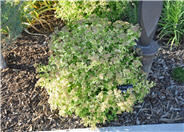
Common name:Gold Mound Spirea
Botanical name:Spiraea japonica 'Gold Mound'
'Gold Flame' is a deciduous shrub with a tight, mounded habit, growing to about 2 to 3 feet tall and 4 feet wide. New leaves emerge with a golden yellow, mature to a yellow-green, and end with a yellow-orange fall color. The flowers are rosy pink, with the heaviest flowering in June, followed by sporadic blooming into the fall (deadheading will help to encourage more consistent flowering). For perennial, shrub, or foundation borders.
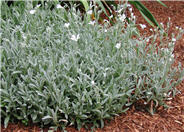
Common name:Snow-In-Summer
Botanical name:Cerastium tomentosum
Masses of snow white flowers cover this plant from late spring to early summer. Fine textured foliage is silvery grey. After flowering, shear back plant to encourage new foliage and for a tidy appearance. Over-head watering may cause the plant to "melt-out" in the center; over-watering, in general, causes the plant to die out over time. An attractive filler among other plants and rocks, and nice ground cover for areas that receive little foot traffic. Plant at edges of walks to soften paths. I saw a lovely planting where cerastium was used to represent water in a "dry creek" design-Brilliant. Grows 4 to 5 inches tall and 15 to 18 inches wide.
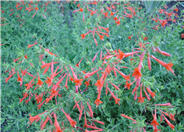
Common name:Creeping Hummingbird Trumpet
Botanical name:Zauschneria garrettii 'Orange Carpet'
This superb Hummingbird Trumpet spreads like a groundcover to form a loose mat of low growing, bright green foliage, about 4 to 6 inches tall and 15 to 18 inches wide. In mid-to-late summer it lights up the garden with a profusion of bright orange flowers that last for many weeks. Regular watering (but not over-watering) when in bloom keeps the flowers coming. 'Orange Carpet' prefers some afternoon shade, especially at lower elevations. Originally selected by David Salman of High Country Gardens. This zauschneria is practically made for parkstrips.
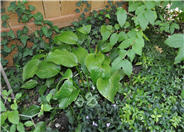
Common name:Hosta
Botanical name:Hosta
Hosta are herbaceous perennials, hardy to Zones 3 or 4, depending on the variety. Sometimes referred to as the plantain lily, hosta have fleshy roots and short spreading rhizomes; in spring broad leaves emerge from a central crown and develop into a mounded form. Leaves come in colors from bright green to gold and even blue tones; some have variegated leaves, with strips, blotches, or margins of varying shades of green, white, cream or gold. Leaf texture varies and can be smooth, veined, or even puckered. Leaf size ranges from petite (a few inches long) to gigantic (a few feet long). Descriptions such as heart-shaped, lance-like, and cupped characterize different leaf shapes. Depending on growing conditions and variety, individual plants range in size from six inches high and a foot or less across to 3 to 4 feet high and 5 to 6 feet across. Although hosta flowers are sometimes discounted as secondary, they can provide great ornamental value. The flower stalks, known as racemes, hold bell-like blossoms of white or lavender to blue. Some flowers are exceptionally fragrant as well as attractive to hummingbirds and bees. Use as an understory plant in the shady shrub or foundation border, or under trees, or in the shady perennial garden.
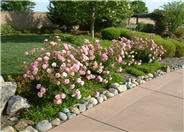
Common name:Meidiland Varieties Rose selections
Botanical name:Rosa x Meidiland Varieties
Meidiland roses are nearly ubiquitous in commercial and institutional landscapes, offering summer-long color and surprising durability for a rose. Generally growing about 1 to 2 feet tall with a spread of about 4 to 5 feet, they have a pleasant arching habit that makes them useful as a sort-of groundcover, or for cascading over walls. They do not require deadheading to remain flowering, and bloom from May to frost. Available in a variety of reds, pinks, and white. Dark green foliage and hips that ripen red in the fall, persisting into winter.
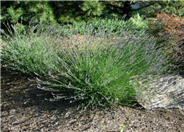
Common name:English Lavender
Botanical name:Lavandula angustifolia
English lavender is a dependably hardy, heat tolerant, drought resistant perennial, well suited to our arid, cold climate. Aromatic, green to grey-green foliage has a rich, resin scent, and grows in tight clumps 1 to 2 feet in height and width, depending on variety. Flowers form at the ends of stiff stems, in whorls of blue to lavender to purple, again, depending on variety. Flowers may add another 6 to 12 inches of height. Use in any sunny spot, such as perennial border, herb garden, parkstrip, lining a pathway.
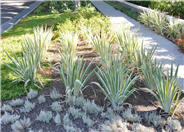
Common name:Variegated Iris
Botanical name:Iris pallida 'Variegata'
If I had to pick my top five must-have perennials, this would be on the list. A species of bearded iris, yellow variegated iris has long, sword like foliage that emerges in early spring and is colored pale, grey-green and lemony yellow. Flowers bloom late spring to early summer, are a pale blue to violet-blue, and are very fragrant (like a cross between grape and apple juice). Absolutely fills the yard. And after flowering, the foliage holds out all summer, unlike other bearded iris; the variegated leaves a striking presence, even without the flowers. The foliage is about 18 to 24 inches tall, and the flowers rise to about 30 to 40 inches. I have never had a garden that didn't include this iris. There is also a variety with white variegation, usually listed as Iris p. 'Argenta.' Fabulous anywhere, and plant enough so you can cut them and bring them indoors.
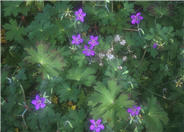
Common name:Sticky Geranium
Botanical name:Geranium viscosissimum
This geranium species, native to Utah, is a lovely geranium with showy pink flowers from May to August. Soft green leaves are deeply segmented and turn an attractive red in the fall. Sticky geranium grows best at our elevation with dappled light, so it is ideal as an understory plant with taller shrubs or woody perennials. Grows about 15 to 20 inches tall and wide.
| Designer: Rick Laughlin | Rick's Victorian 2 |
Photographer: GardenSoft |
Water Saving Tip:
Apply as little fertilizer as possible.
If you use fertilizer make sure it stays on the landscape, and carefully water it in so there is NO runoff.
